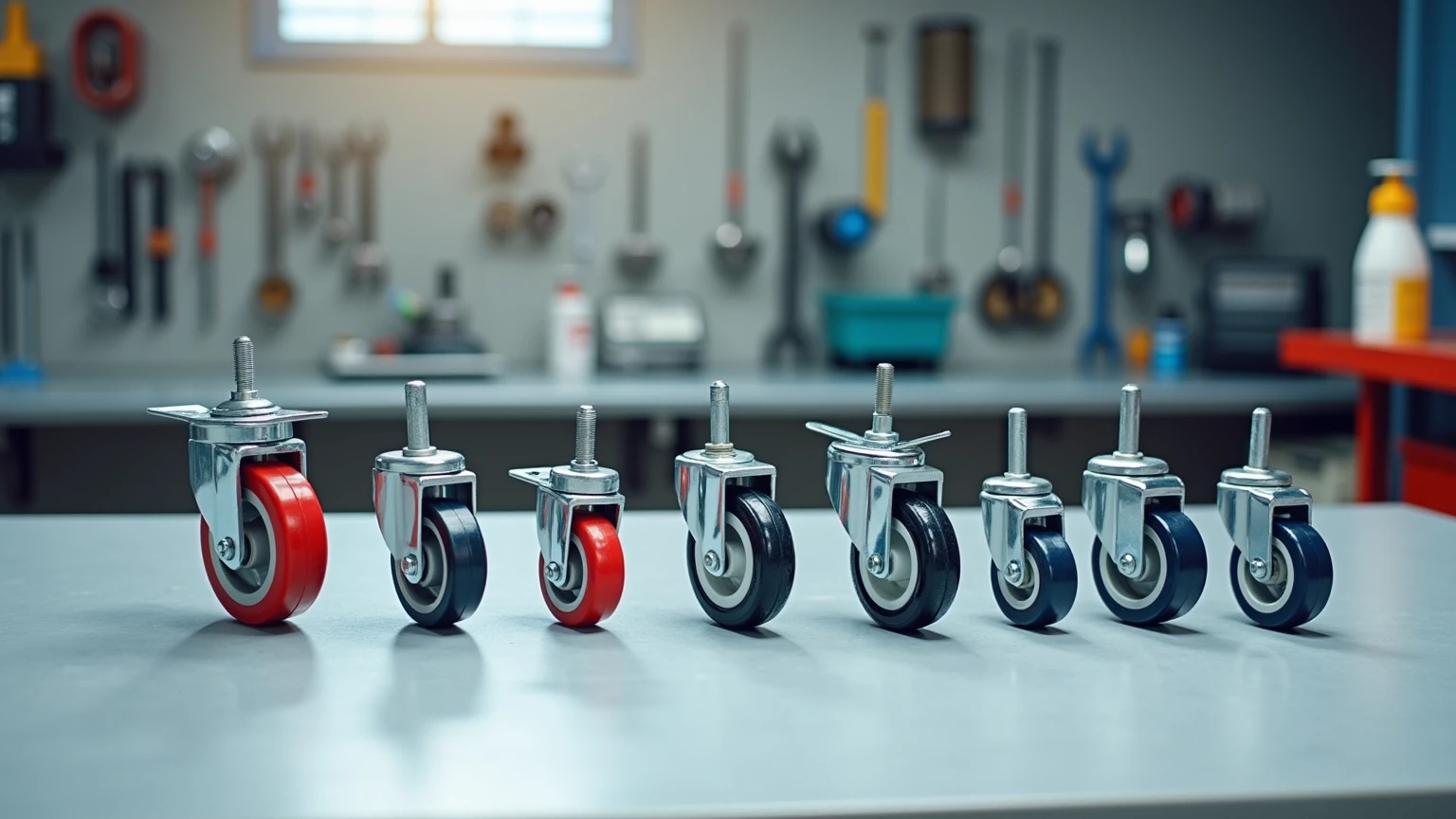Casters play a significant role in enhancing mobility and efficiency for a diverse range of applications. These small wheels support a variety of objects, from office chairs to heavy-duty carts, making them invaluable in both industrial and residential settings.
A caster, or castor, is an undriven wheel designed to be mounted on the bottom of larger objects, allowing for smooth movement in various directions. Its design usually incorporates a wheel that can either swivel independently or remain rigid, depending on the required mobility. Understanding the mechanisms and advantages of different types of casters is essential for selecting the right one for your needs.
Casters are versatile and widely used in numerous applications, including:
Each application necessitates careful consideration of factors such as load capacity, wheel type, and surface compatibility, making it crucial to choose the appropriate caster.

Rigid casters consist of a wheel fixed to a stationary fork, limiting movement to a straight line. This type is ideal for applications where direction changes are minimal. They're often used on the back of shopping carts for increased stability.
Swivel casters have a wheel mounted on a fork that can turn 360 degrees, allowing for easy maneuverability in tight spaces. They're perfect for environments where objects need frequent directional changes, like in office chairs or trolleys.
Total lock casters combine the functions of flexible swivel motion with a brake that locks both the wheel and the swivel feature. This is particularly useful for ensuring stability when an object is temporarily stationary, making it useful for heavy-duty carts.
Brake casters are equipped with mechanisms that lock the wheel in place but also allow for some swiveling. They're widely used in settings where equipment may need to be securely positioned yet remain mobile when required.
Kingpinless casters feature a unique design that eliminates the central kingpin, reducing the risk of failure under high loads. This design enhances durability and is commonly found in environments subject to significant impact, such as manufacturing.
Selecting the right caster involves understanding your specific requirements and the environment in which they will be used.
Different surfaces may require specific wheel materials. Harder wheels are ideal for smooth surfaces, while softer wheels provide better traction on uneven surfaces, preventing damage and ensuring smoother operation.
Every caster comes with a specified weight capacity. If a caster is used beyond its rating, it can fail, leading to potential safety risks and costly damage. Therefore, ascertain the total weight the caster will endure and select one that exceeds those requirements.
Consider how frequently you'll need to change direction. For tight spaces like kitchens or offices, swivel casters are preferable. However, in more straightforward applications like a warehouse, rigid casters may be more suitable.

Understanding the distinction between industrial and residential casters is crucial for making informed decisions about mobility solutions.
Industrial casters are designed to handle heavy loads and are constructed from robust materials. They can withstand extreme conditions and demands found in warehouses or factories, with load capacities often reaching thousands of pounds.
Residential casters are tailored for everyday objects, such as furniture, and come in various materials and designs for aesthetic purposes. They're usually designed for lighter loads and focus on smooth operation and appearance rather than sheer strength.
While industrial casters prioritize load capacity and durability, residential options emphasize design and user comfort. It's essential to choose based on the application's specific demands.
Casters are pivotal for enhancing mobility in numerous scenarios. However, their functionality must be complemented by regular maintenance and safety considerations to ensure longevity and prevent accidents.
Regular inspection and maintenance can extend the lifespan of casters. Check for signs of wear and tear, clean the wheels, and ensure that the swivel mechanisms are lubricated to prevent binding or failure.
When using casters, observe weight limits, avoid sudden stops, and ensure that brakes are engaged when stationary. Education on proper usage can prevent accidents, particularly in commercial settings.
When buying casters, consider the weight capacity, the surface they'll be used on, and the required mobility (swiveling vs. rigid).
Maintain your casters by regularly inspecting them for wear, cleaning them regularly, and lubricating swivels to ensure smooth operation.
Yes, but consider the aesthetic and noise levels, as industrial casters may not blend in well or may operate noisily in residential environments.
Yes, outdoor casters are made from more durable materials that withstand various weather conditions and provide reliable functionality on rough terrain.
Most casters come with mounting plates that can be attached to the base of furniture with screws. Ensure you follow the manufacturer's instructions for proper installation.
By understanding the types, specifications, and applications of casters, users can make informed choices that enhance functionality while ensuring safety and efficiency across industries.